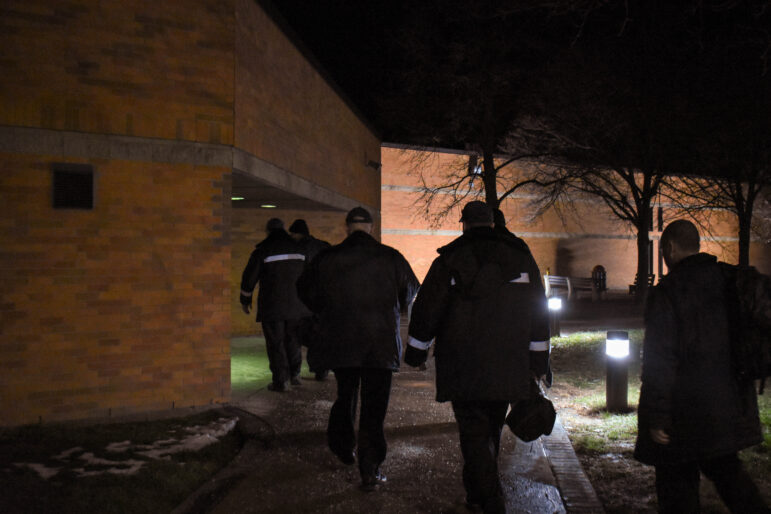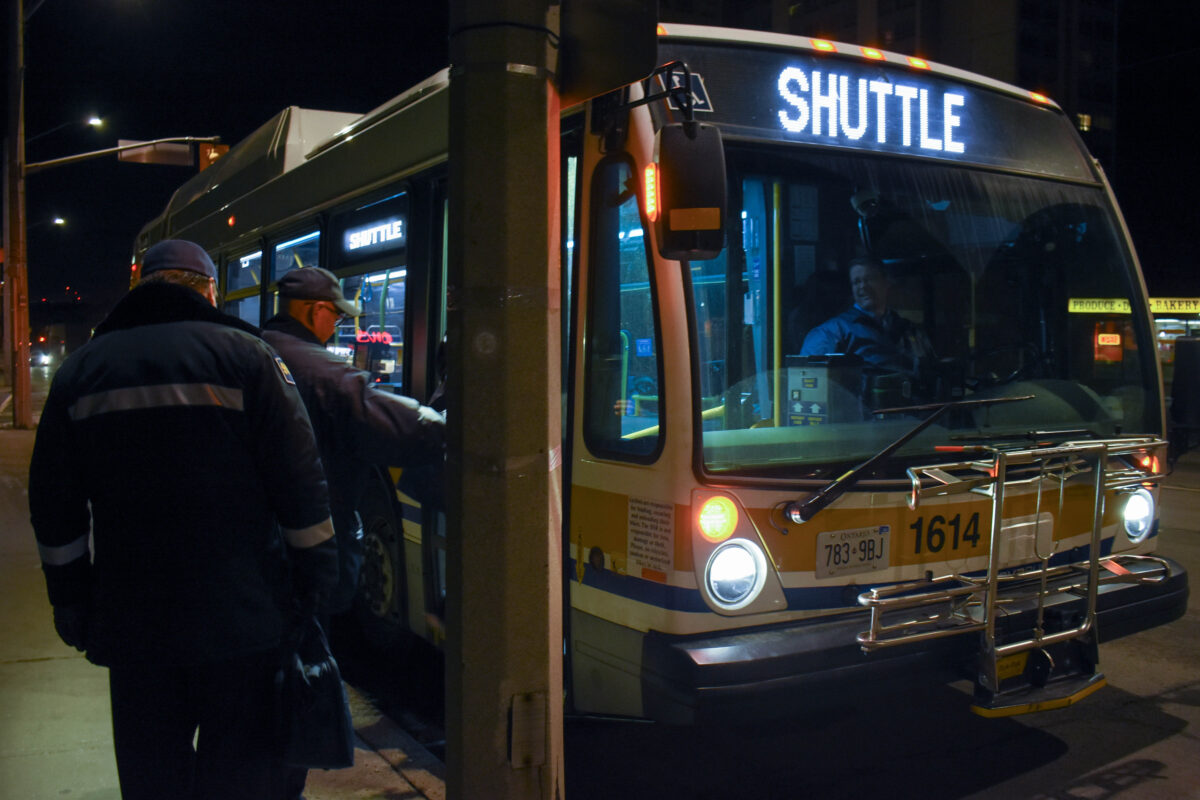Hamilton’s public transit workers will vote this weekend on a “final offer” from the City of Hamilton.
One of the contentious issues is the City’s proposal to remove daytime shuttle buses between the HSR garage and the various starting points for HSR bus operators.
Removing the shuttle means HSR operators who drive the 11-Parkdale will spend up to 90 minutes riding HSR buses from Parkdale Avenue and Queenston Road back to the garage.
Many operators have told me the removal of the shuttles is the defining issue for them.
The profile of Hamilton’s transit workers has changed since the last HSR strike in 1998/99.
At the time, the HSR’s primary garage was at 330 Wentworth Street North, having moved in 1990 from its previous decade’s long home on King Street East at Wentworth Street.
Who could’ve predicted the late 1990s decision to move HSR operations from the lower city Wentworth Street North garage to near the airport would create the conditions for a potential strike?
From its founding in 1874, many HSR workers generally lived close enough to walk to the garage. HSR maintenance, managers, and office workers lived along the streetcar and trolley lines.
23 years ago, in 2000, shortly after the 12-week strike ended, the last HSR bus rolled out of the Wentworth garage. HSR employees could no longer walk or take transit to work.
HSR workers began migrating to Haldimand County. Many now live in Caledonia.
The drive to the HSR garage is quicker, and the cost of housing is lower, than living in Hamilton.
(The concentration of HSR workers in Caledonia posed a challenge for HSR operators during the peak of COVID. School COVID outbreaks in Caledonia strained HSR operations as many bus drivers were required to stay home to care for children or themselves.)
Back to the shuttle bus.
Bus operators who begin in the early morning will park their vehicles at the HSR garage, drive their bus into service, and, for the majority, end their shift in Downtown Hamilton. From there, they need to get back to the garage.
The reverse happens for the late evening shift. They park at the garage and take the shuttle to Downtown to begin their shift. At the end of the night, they drive the bus back to the garage, get in their car and end the night.

Acting City Manager Carlyle Khan wrote in a memo to HSR employees that “since all HSR employees already receive free transit, and the significant increases in service frequency since the shuttle was implemented years ago,” the City does not see the need to continue daytime shuttle services.
Back 25 years ago, the then-Region of Hamilton-Wentworth saved significant sums of money during the strike. Regional Council showed little interest in settling the strike, which lasted 12 weeks during November, December, January, and February.
As I wrote in a February newsletter edition:
In 1998, the Region held the line on HSR wages and benefits, offering three percent on wages, and no concessions on other union demands.
A 12-week strike followed. In the end HSR workers gained little, 20 cents per hour.
Former Hamilton Mayor (1976 – 1980) Jack Macdonald summarized the cost to ATU union members in TheSpec on January 27, 1999:
“Drivers have lost 12 weeks pay at about $800 for a 40-hour week. In return for a $9,600 loss over 12 weeks, they gained about a further 20 cents an hour beyond the three-per-cent offer. In about 28 years, they will recover their loss.”
City Council has stated it will hold the line on the final offer – including the shuttle bus issue.
Production Details v. 1.0.0 Published: November 3, 2023 Last edited: November 3, 2023 Author: Joey Coleman Edit Record v. 1.0.0 original version


I have been riding the Parkdale 11 to work for some time. On time, all the time, barring some extreme ungovernable event. Like almost all the HSR operators, Parkdale 11 drivers are super friendly, super safe and very efficient. If they say a shuttle bus is required to maintain the current level of service then give them a shuttle bus.
When will we know when they are striking
HSR workers are voting on the final offer today.
Voting ends at 8 p.m.
More and more people are relying on public transit. The cost of living has caused everyone to watch their money. This includes cash and insurance. Taking a bus is cost effective and allows people to save alittle and put it towards other things like groceries, bills etc. I feel drivers should get what they want and the city should keep the shuttle service for them. For safety especially.
My question is simple why does the shuttle bus have to be a full size bus. If they need a full size bus incorporate the shuttle with the a line which runs from the Harbour to the airport anyways. Thecshuttle should be a minivan or cargo van with seats type vehicle. I have never seen 20 drivers get off the shuttle. I
The driver shuttle regularly leaves the MTC with 20 drivers. A few get off at Rymal, Stonechurch and Mohawk (where they are required to start their shift), a few get off on John Street (to get to the GO station earlier), a bunch get off at FRAC and then finally, the rest get off as the shuttle bus goes through GO Station. While the drivers coming from MTC are getting off at specific points, others are getting on to go back to MTC, or to get to their next start point if they are on a split.
The City of Hamilton needs to leave the shuttle buses for all the drivers.make it easy for them.my city still have shuttle buses for the drivers.we have less buses and riders.
I’m all for it. If the drivers actually need the bus to be on time to get to work – like the majority of riders – perhaps we’ll start sticking to the schedule. No more of being 20 minutes late on a schedule with seven minute intervals. No more having three buses bumper to bumper on the route. No more sitting to chat with the buddy who just pulled in at the end of the line. No more treating the schedule like a gentle suggestion that can be flaunted at will.
Think about snow days… The poor drivers will have to commute on super late busses for hours just to get to their bus to start the shift and then hours back to the garage if bus service is even running at that time, only to drive in the same snow storm home and maybe get 3-4 hours sleep and then get back to work taking more transit. Do you really want tired drivers behind the wheels? The driver shuttle is a small expense that has a big pay off to ensuring drivers are safe from being tired behind the wheel. Having the public abuse us on a daily basis and having to operate safely in any weather condition 8, 10, 12 hours a day every day takes a lot out of you. Just look at how many quit within the first month! That’s the real story
Meet in the middle and end all routes at the garage on the mountain. Stagger shift start times.
There isn’t enough parking for 800 drivers at the garage.